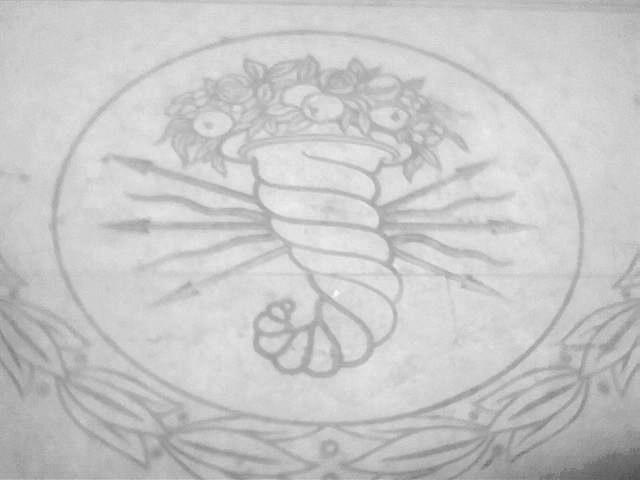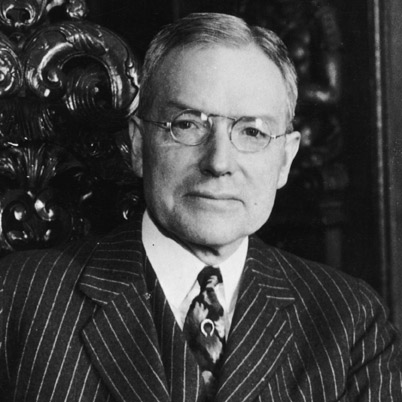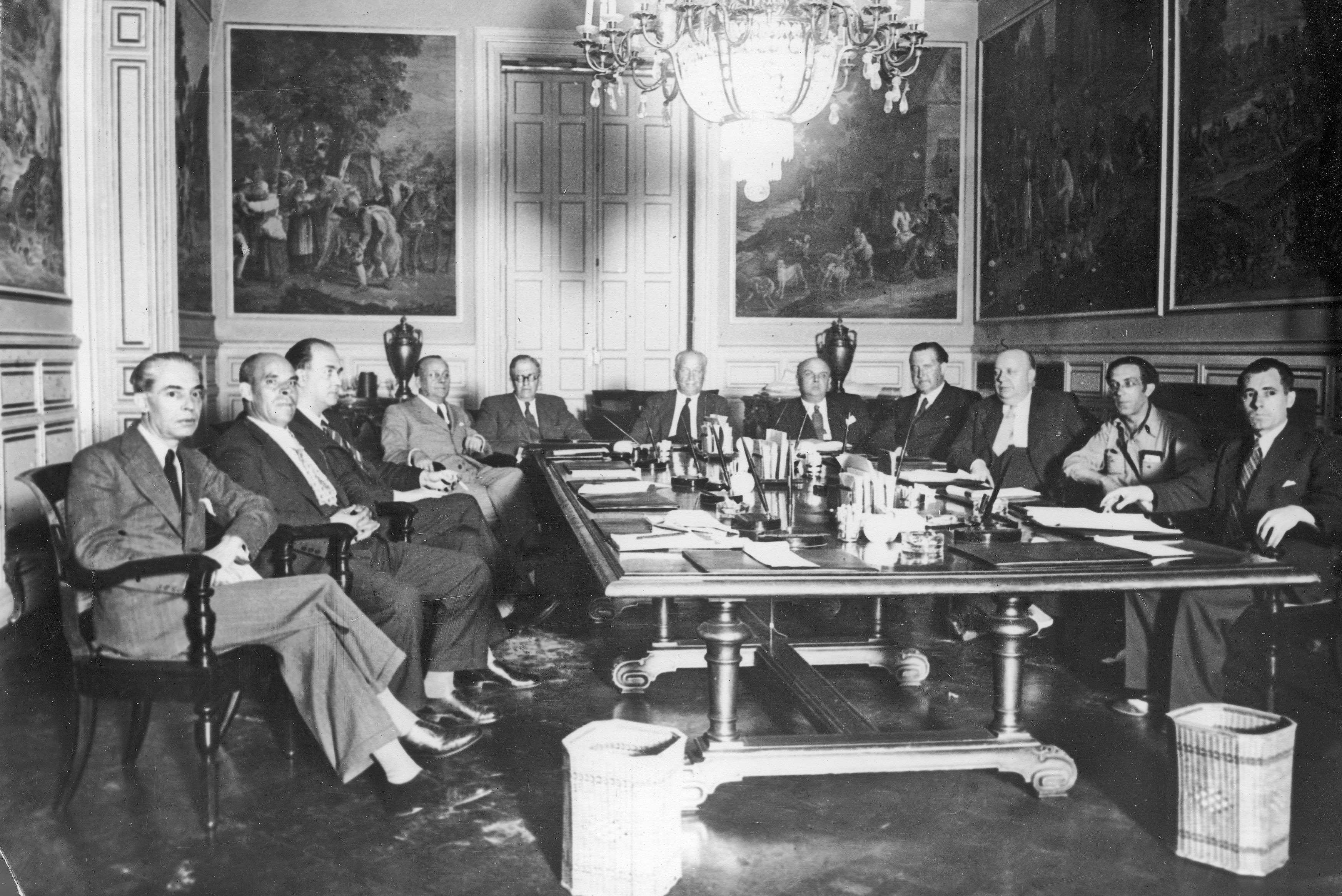|
Toribio Martínez Cabrera
Toribio Martínez Cabrera (13 April 1874 – 23 June 1939) was a Spanish soldier who fought in his youth against the rebels in Cuban War of Independence (1895–1898). After returning to Spain he rose steadily through the ranks. He remained loyal to the Republic during the Spanish Civil War (1936–1939) and was appointed Chief of Staff. After the defeat of the Army of the North in 1937 he was arrested and imprisoned, but was later released and made commander of Madrid. He was captured at the end of the civil war and executed. Early years (1874–1903) Toribio Martínez Cabrera was born in Andiñuela in the municipality of Santa Colomba de Somoza, León, on 13 April 1874. His parents were Vicente Martínez Crespo and Juana Cabrera Fernández. At the age of 18 he volunteered for the army and on 24 August 1892 became a private in the 4th Artillery Battalion of Ferrol, Galicia. In 1894 he entered the Infantry Academy in Toledo, and on 21 February 1896 graduated as second lieuten ... [...More Info...] [...Related Items...] OR: [Wikipedia] [Google] [Baidu] |
Santa Colomba De Somoza
Santa Colomba de Somoza, whose name is in Leonese language, is a municipality located in the province of León, Castile and León, Spain. According to the 2004 census (INE), the municipality has a population of 498 inhabitants. Santa Colomba de Somoza in the movies * 2005 : Saint-Jacques... La Mecque directed by Coline Serreau Coline Serreau (born 29 October 1947) is a French actress, film director and writer. Early life and education She was born in Paris, the daughter of theatre director Jean-Marie Serreau and actress Geneviève Serreau. In Paris, Serreau studied ... References Municipalities in the Province of León Maragatería {{León-geo-stub ... [...More Info...] [...Related Items...] OR: [Wikipedia] [Google] [Baidu] |
Valencia
Valencia ( va, València) is the capital of the autonomous community of Valencia and the third-most populated municipality in Spain, with 791,413 inhabitants. It is also the capital of the province of the same name. The wider urban area also comprising the neighbouring municipalities has a population of around 1.6 million, constituting one of the major urban areas on the European side of the Mediterranean Sea. It is located on the banks of the Turia, on the east coast of the Iberian Peninsula, at the Gulf of Valencia, north of the Albufera lagoon. Valencia was founded as a Roman colony in 138 BC. Islamic rule and acculturation ensued in the 8th century, together with the introduction of new irrigation systems and crops. Aragonese Christian conquest took place in 1238, and so the city became the capital of the Kingdom of Valencia. The city's population thrived in the 15th century, owing to trade with the rest of the Iberian Peninsula, Italian ports and other loca ... [...More Info...] [...Related Items...] OR: [Wikipedia] [Google] [Baidu] |
1874 Births
Events January–March * January 1 – New York City annexes The Bronx. * January 2 – Ignacio María González becomes head of state of the Dominican Republic for the first time. * January 3 – Third Carlist War – Battle of Caspe: Campaigning on the Ebro in Aragon for the Spanish Republican Government, Colonel Eulogio Despujol surprises a Carlist force under Manuel Marco de Bello at Caspe, northeast of Alcañiz. In a brilliant action the Carlists are routed, losing 200 prisoners and 80 horses, while Despujol is promoted to Brigadier and becomes Conde de Caspe. * January 20 – The Pangkor Treaty (also known as the Pangkor Engagement), by which the British extended their control over first the Sultanate of Perak, and later the other independent Malay States, is signed. * January 23 ** Prince Alfred, Duke of Edinburgh, second son of Queen Victoria, marries Grand Duchess Maria Alexandrovna of Russia, only daughter of Tsar Alexander III of ... [...More Info...] [...Related Items...] OR: [Wikipedia] [Google] [Baidu] |
Military Police
Military police (MP) are law enforcement agencies connected with, or part of, the military of a state. In wartime operations, the military police may support the main fighting force with force protection, convoy security, Screening (tactical), screening, rear reconnaissance, logistic traffic management, counterinsurgency, and detainee handling. In different countries it may refer to: * A section of military forces assigned to police, or garrison, occupied territories, usually during a war. * A section of military forces assigned to policing Prisoner of war Detention (imprisonment), Detentions. * A section of the military responsible for policing the areas of responsibility of the armed forces (referred to as Provost (military police), provosts) against all criminal activity by military or civilian personnel * A section of the military responsible for policing in both the armed forces and in the civilian population (most gendarmeries, such as the National Gendarmerie, French Ge ... [...More Info...] [...Related Items...] OR: [Wikipedia] [Google] [Baidu] |
Policía Armada
The ( en, Armed Police), conventional long names ( en, Armed and Traffic Police Corps) and ( en, Armed Police Forces), —popularly known as ( en, the grey ones) owing to the color of their uniforms— was an armed urban police force of Spain established by the Francoist regime in 1939 to enforce the repression of all opposition to the regime. Its mission was "total and permanent vigilance, as well as repression when deemed necessary." The first commander of the was General Antonio Sagardía Ramos. In its first years of operation the corps was inadequately equipped in armament and vehicles but this situation would be steadily straightened out. History Following the overthrow of the Second Spanish Republic in April 1939, the Francoist Spain initially relied on the Army in order to handle public order issues. By means of two sets of laws issued on 3 August 1939 and 8 March 1941 the Spanish State reorganized the police forces of Spain and established the Armed Police as ... [...More Info...] [...Related Items...] OR: [Wikipedia] [Google] [Baidu] |
Consejo Nacional De Defensa
The National Defence Council ( es, Consejo Nacional de Defensa) was the governing body in Republican Spain at the end of the Spanish Civil War (1936–1939). The council seized power with Colonel Segismundo Casado’s coup on 5 March 1939 when it was clear that the Republicans had lost the war. The leaders hoped to negotiate an end to hostilities with the rebel forces led by General Francisco Franco. However, Franco insisted on unconditional surrender, and on 26 March 1939 launched the final offensive of the Spanish Civil War. By the end of the month he controlled the whole country. Most of the council members escaped into exile on British warships. Background As early as May 1937, when Julián Besteiro of the Spanish Socialist Workers' Party went to London to represent the Spanish Republic at the coronation of King George VI, president Manuel Azaña asked him to inquire if the British government would mediate in the civil war. Besteiro met Anthony Eden on 11 May 1937, b ... [...More Info...] [...Related Items...] OR: [Wikipedia] [Google] [Baidu] |
Segismundo Casado
Segismundo Casado López (10 October 1893 – 18 December 1968) was a Spanish Army officer; he served during the late Restoration, the Primo de Rivera dictatorship and the Second Spanish Republic. Following outbreak of the Spanish Civil War he sided with the Republicans, gradually rising to commander of the Army of the Centre. He is best known as leader of the coup against the government of Juan Negrín; its objectives were preventing a Communist takeover and terminating fratricidal bloodshed during the war, considered already lost. The rebels seized control of the Republican zone; in their quasi-government Casado served as the minister of defense. Negotiations with the Nationalists failed; Casado went on exile, first to Britain and from 1947 to Latin America, returning to Spain in 1961. Military career There is little clarity as to Casado’s parents. Himself he claimed - and this information is reproduced by the Spanish Real Academia de la Historia - that his parents, ... [...More Info...] [...Related Items...] OR: [Wikipedia] [Google] [Baidu] |
Juan Negrín
Juan Negrín López (; 3 February 1892 – 12 November 1956) was a Spanish politician and physician. He was a leader of the Spanish Socialist Workers' Party ( es, Partido Socialista Obrero Español, PSOE) and served as finance minister and prime minister of the left-leaning Popular Front government of the Second Spanish Republic during the Spanish Civil War. He was the last Loyalist premier of Spain (1937–1939), leading the Republican forces defeated by the Nationalists under General Francisco Franco. He was President of the Council of Ministers of the Second Spanish Republic and the Spanish Republican government in exile between 1937 and 1945. He died in exile in Paris, France. None of the leaders of the Second Spanish Republic has been as vilified as Negrín, not only by Francoist historians, but also by important sectors of the exiled Spanish Left, including the leadership of his own Socialist Party and as his friend-turned-nemesis Indalecio Prieto. He has been depic ... [...More Info...] [...Related Items...] OR: [Wikipedia] [Google] [Baidu] |
José Asensio Torrado
José Asensio Torrado (1892–1961) was a Spanish general. Life Before the Spanish Civil War, he was a major in the Republican Army and a member of the Republican Antifascist Military Union. He was one of the few ''Africanistas'' officers who remained loyal to the Republican government, and he led a militia column on the Somosierra front. He led the Republican troops on the Tagus front and reorganised the Republican troops but was unable to stop the Nationalist offensive. On 24 October, he was appointed subsecretary of war by Prime Minister Francisco Largo Caballero and in November 1936 was appointed commander of the Central Army. He reorganised the Republican Army and aided in the forming of the mixed brigade Mixed brigade ( es, brigada mixta) was a basic tactical military unit of the Republican army during the Spanish Civil War. It was initially designed as “pocket division”, an innovative maneuverable combined-arms formation. Because of high sa ...s, which merged th ... [...More Info...] [...Related Items...] OR: [Wikipedia] [Google] [Baidu] |
Gijón
Gijón () or () is a city and municipality in north-western Spain. It is the largest city and municipality by population in the autonomous community of Asturias. It is located on the coast of the Cantabrian Sea in the Bay of Biscay, in the central-northern part of Asturias; it is approximately north-east of Oviedo, the capital of Asturias, and from Avilés. With a population of 271,780, Gijón is the 15th largest city in Spain. Gijón forms part of a large metropolitan area that includes twenty councils in the center of the region, structured with a dense network of roads, highways and railways and with a population of 835,053 inhabitants in 2011, making it the seventh largest in Spain. During the 20th century, Gijón developed as an industrial city in the steel and naval industries. However, due to the decline in manufacturing in these industries, in recent years Gijón is undergoing a transformation into an important tourist, university, commercial and R&D center. Gijón ... [...More Info...] [...Related Items...] OR: [Wikipedia] [Google] [Baidu] |
Jesús Hernández Tomás
Jesús Hernández Tomás (1907 – 11 January 1971) was a Spanish communist leader. During the Spanish Civil War (1936–1939) he was Minister of Education and Fine Arts, then Minister of Education and Health. After the war he went into exile in Oran, Moscow and then Mexico. He was expelled from the party in 1944 for disloyalty to the leadership, and purged from the official history of the party after writing a book in 1953 critical of the Stalinist role in the Civil War. Early years Jesús Hernández Tomás was born in Murcia in 1907. He was one of the founders of the Communist Party in Biscay. In 1922 he was part of the guard of Óscar Pérez Solís, Secretary General of the Spanish Communist Party (''Partido Comunista Español'', PCE). Hernández participated in the failed attack on the socialist Indalecio Prieto. In 1927 he was a member of the Central Committee of the Communist Youth Hernández was arrested in 1929 and released the next year. Hernández went to the Soviet Uni ... [...More Info...] [...Related Items...] OR: [Wikipedia] [Google] [Baidu] |
Vicente Uribe
Vicente Uribe Galdeano (30 December 1902 – 11 July 1961) was a Spanish metalworker and politician who became a member of the executive of the Communist Party of Spain (PCE). He served as Minister of Agriculture during the Spanish Civil War (1936–1939) for the Republican faction. He went into exile in Mexico during World War II (1939–1945), then lived in France and Czechoslovakia after the war. He was disgraced in 1956 during the post-Stalinist power struggle. Life Early years Vicente Uribe Galdeano was born in Bilbao in 1897. He became a metalworker, and in 1923 joined the Communist Party of Spain. He was a member of the party's executive from 1927. He married Teresa García, and they had five children. In 1932 the Spanish Communist Party made a major change in direction when it abandoned the Comintern slogan "Workers' and Peasants' Government" and adopted "Defense of the Republic". Uribe was among the new leaders of the party who succeeded José Bullejos. The others were ... [...More Info...] [...Related Items...] OR: [Wikipedia] [Google] [Baidu] |


.jpg)



